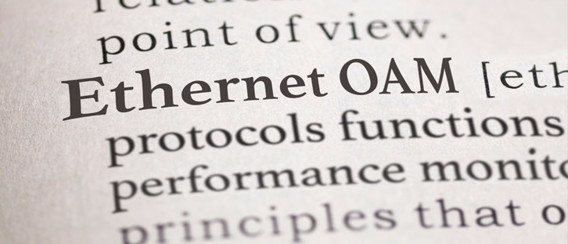Ethernet OAM Explained
It’s no secret: failing to meet your service-level agreement (SLA) makes all the difference between customer churn and repeat customers. If you aren’t able to guarantee reliability, availability, fast failovers and recovery, customers will simply switch to another service provider.
So how does one achieve painless fault location, failure restoration, performance monitoring, security management and diagnostic functions in Ethernet-based solutions? With Ethernet operations, administration and maintenance (OAM).
Ethernet Service OAM (SOAM) is a standardized method of retrieving and providing health assessment of Ethernet-based services. By injecting OAM data packets into the normal stream at layer 2, it is possible for endpoints to process them and assess performance. This method can be used to identify improperly configured nodes, out-of-place nodes, disconnected or failed nodes, as well as frame loss, frame delay, frame delay variation and end-to-end path identification.
The main OAM protocols functions are:
- Connectivity fault management (CFM), as defined in ITU Y.1731, IEEE 802.1ag and MEF 30.1
- Performance monitoring (PM), as defined in ITU Y.1731 and MEF 35
Other protocols and frameworks include IEEE 802.1ab, IEEE 802.3ah and MEF 17.
You are familiar with legacy OAM and wondering how these functionalities have been translated in the Carrier Ethernet world? Beside reading all the different standards and trying to connect the dots, I would suggest starting with our latest white paper on Understanding Ethernet OAM.



